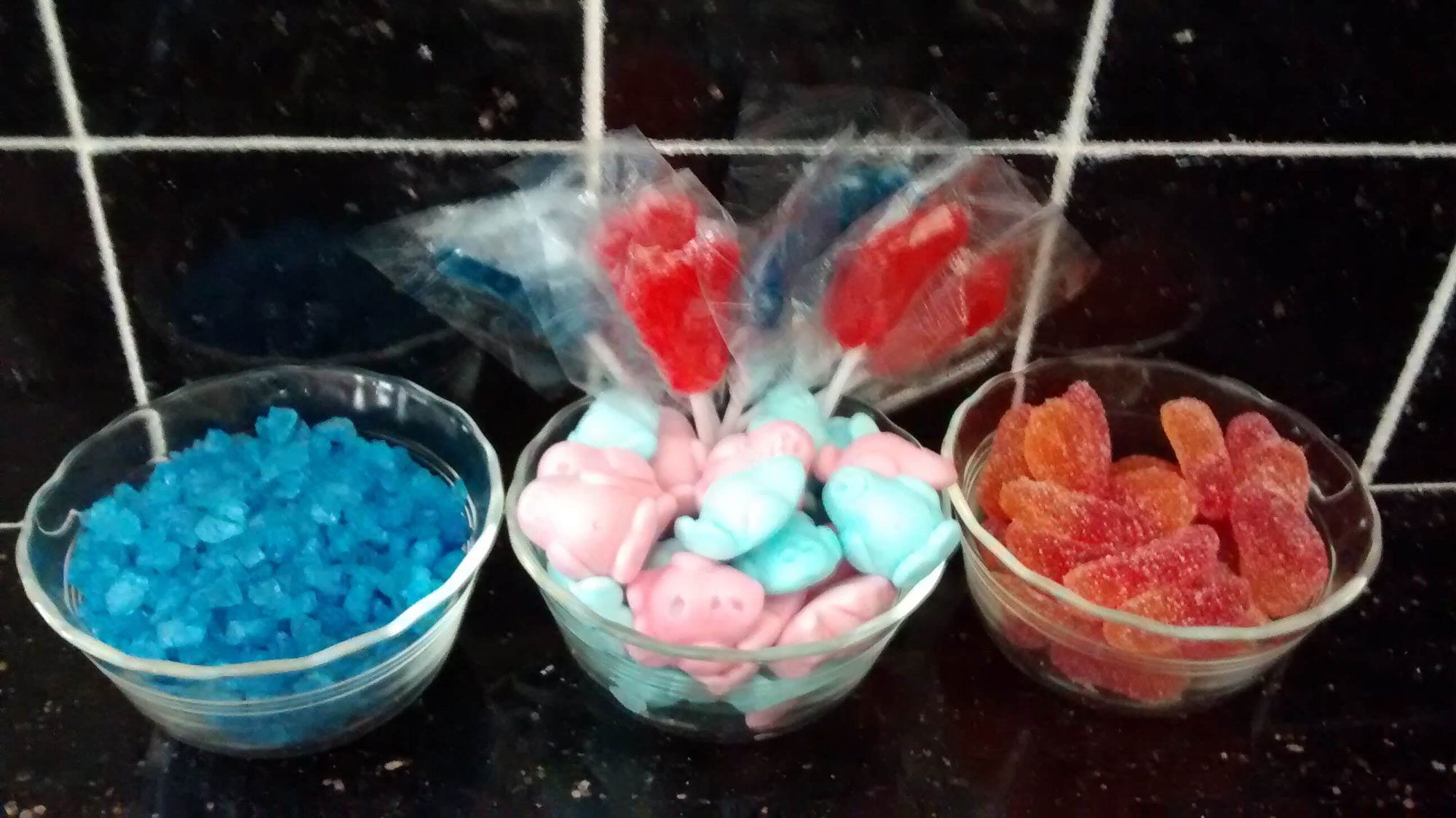As Rosh Hashana is next week, and many of us are planning our menus and cooking in advance, I thought it would be best to post the Rosh Hashana Sweets and Treats blog a little early!
Rosh Hashana is known for its symbolic foods. From round challot to apples and honey, much of the food we eat on Rosh Hashana is meaningful. But did you know that there are so many different symbolic foods on Rosh Hashana? This week’s Parsha Sweets and Treats blog will include our regular weekly Parsha section as well as some ideas for symbolic foods to enhance your Rosh Hashana table next week, complete with a few of our favorite recipes (which will appear at the bottom of the post)! These dishes have become an annual tradition in our house and we look forward to them all year. We hope that they make your Rosh Hashana a bit more sweet.
Wishing all of you and your families a Shana Tova U’Metuka – a Good and Sweet New Year,
Shayna Levine-Hefetz
Parshiyot Nitzavim and Vayelech:
Although in most years, the Torah Portions, Nitzavim and Vayelech are read together, this year they are read separately. Parshat Nitzavim is read this week and Parshat Vayalech is read between Rosh Hashana and Yom Kippur.
In Parshat Nitzavim, Moshe gathers all of the Jewish People, men, women and children, on the day of his death to enter them into a covenant with God. He reminds the people that when they sin, God will exile them from Israel but tells of a time when we will return wholeheartedly to God and He will gather us from the four corners of the earth to Israel. This message of Teshuva, repentance, is quite timely the Shabbat before Rosh Hashana. Moshe says, “God will ‘circumcise’ your heart and the heart of your offspring, so that you may love the Lord your God with all your heart and with all your soul” and that keeping the mitzvot (commandments) “is not beyond you nor is it remote from you. It is not in heaven… It is not across the sea…. Rather, it is very close to you, in your mouth, in your heart, that you may do it.” The concept of free will is included this week and we are commanded that we are given the choice between good and evil, life and death, and that we should choose life.
In Parshat Vayelech, Moshe informs the people that he is 120 years of age on that day, and he is not permitted to cross the Jordan River together with them. He hands over leadership to Yehoshua who will lead them into Israel. He tells Yehoshua to be strong and courageous, for G‑d will be going before him and will not forsake him. Moshe then wrote the entire Torah and gave it to the Kohanim (priests) and the elders. Moshe gives the commandment of Hakhel (assembly), in which every seven years, during the holiday of Sukkot which follows the Sabbatical year, all men, women, and children assemble and the king publicly reads sections of the Torah. After going into the Mishkan (Tabernacle) together with Yehoshua where Hashem appears to them, they compose a song which is narrated in the Torah reading next week which reminds the Jewish people of the punishments for sin and the opportunity to return. Moshe then took the freshly concluded Torah scroll and gave it to the Leviim to be placed beside the Ark which contained the Ten Commandments and gathers the people to hear the song.

These Parshiot lend themselves to so many different treats! The pink and blue bubble monsters (a favorite in my house!) are symbolic of the gathering of the people to hear Moshe’s speech and the gathering of the people at Hakhel every seven years. The blue rock candy symbolizes the water of the Jordan that the people are about to cross, but that Moshe cannot cross with them. It can also symbolize the sky and water, as we are reminded that keeping the mitzvot is not in heaven or across the sea. The candy feet symbolize the people coming together now and every seven years, as well as Moshe having to stop his journey here. The candy hearts symbolize God “circumcising” our hearts, our loving Hashem with all of our hearts, and His eternal love for us as He waits for us to return wholeheartedly to Him (pun intended). Last but certainly not least, you can easily make the Torahs (reminiscent of the completion of the writing of the Torah Parshat Vayelech and the reading of the Torah at Hahkel) in the picture using just 3 ingredients – rectangular wafers, wafer rolls and marshmallow fluff!
Enjoy and Shabbat Shalom!
Rosh Hashana Symbolic Foods:
1) Carrots: May our merits increase
For this symbolic food we have two recipes to share. Carrot Muffins are more kid-friendly and even the pickiest eaters will eat them! Honey rum carrots are delicious and the honey makes it all the more appropriate! The “Simanim Salad” also includes carrots. See recipes below.
2) Leeks or Cabbage: May our enemies be decimated
In our home, we make “Simanim Salad” that includes leeks, cabbage carrots and pomegranate! See recipe below.
3) Beets: May our adversaries be removed
I will admit, we go the easy route for beets and buy the beets in a jar in our supermarket. Everyone loves them!
4) Dates: May our enemies be consumed
We eat dried dates for this symbolic food in our home.
5) Gourd: May the decree of our sentence be torn asunder and may our merits be proclaimed before You.
Pumpkin muffins are a favorite in our house! See recipe below.
6) Pomegranate: May our merits increase as the seeds of the pomegranate
While there are pomegranate seeds in our Simanim Salad, we like to eat them plain as well!
7) Fish: May we be fruitful and multiply like fish
We make gefilta fish with large carrots for this symbolic food. But we also serve fake crab sticks for those in our house who prefer those and fish candies since we have one non-fish eater as well.
8) Head of Fish or Lamb: May we be as the head and not as the tail
The very idea of having the head of an animal on my table is not palatable to me. But the kids love our adaptation. I buy gummy fish at the candy store and then cut off the heads and serve only the heads of the gummy fish.
9) Since many of the symbolic foods are plays on words (based on what they are called in Hebrew or Yiddish) there is a modern American version that we adopted for fun a few years back. The ingredients are simple – lettuce, raisins and celery. Please let us have a raise in salary! I cut them up and add a bit of a vinaigrette dressing.
Enjoy!
Recipes
(Our personal modifications appear in parentheses)
Honey Rum Carrots
(from Kosher by Design Short on Time by Susie Fishbein)
1 pound baby carrots (we sometimes use carrots cut into large coins)
1 cup water
1 Tablespoon margarine (we use a healthier margarine alternative and it comes out great)
3 Tablespoons honey
1/2 teaspoon seat salt (we use regular salt)
2 Tablespoons rum or bourbon (we use rum)
In a skillet or pot, heat the carrots and water to boiling over high heat. Reduce the heat to low. Cover and simmer for 10 minutes, until the carrots are tender. Drain; return to the skillet. Meanwhile, in a small saucepan, cook the margarine, honey and salt for 4-5 minutes, stirring frequently, until blended and smooth. Add the mixture to the drained carrots. Off the heat, to avoid a flame-up, add the rum. Cook over medium-high heat for 8-10 minutes, stirring, until the carrots are tender and glazed and the liquid has mostly evaporated.
Carrot Muffins
(from Kosher by Design Kids in the Kitchen by Susie Fishbein)
1 cup sugar
1 cup all-purpose flour
3/4 cup canola oil
12 ounces baby food carrots (usually 3 jars)
1 teaspoon baking soda
1 teaspoon cinnamon
2 large eggs
Preheat the oven to 350. Place the sugar, flour and oil in a medium mixing bowl. Add the baby food carrots, using a small spatula or a spoon to get all of the baby food out of the jar. Add the baking soda, cinnamon and eggs. Mix with an electric mixer at medium speed for 3 minutes, until the batter is smooth. Place paper muffin cups into a muffin or cupcake tray. If your measuring cup has a spout, pour the bater from the measuring cup into the muffin cups; if not use a large spoon. Fill the muffin cups almost to the top. Place trays in the oven and bake for 30 minutes. If after 30 minutes, a toothpick placed in the center of a muffin comes out gooey, return the muffins to the oven for another 2-3 minutes.
“Simanim Salad”
Adapted from Purple Cabbage Salad from Kosher by Design by Susie Fishbein
Salad:
16 ounces shredded purple cabbage (we use 2 bags of shredded cabbage which might be closer to 20 ounces)
1/3 cup chopped scallions (we substitute leeks instead of scallions)
1/3 cup pine nuts (we leave these out)
1 8 oz bag of shredded carrots
1 11 ounce can of madarin oranges, reserving the juice
1-2 handfuls of dried cranberries (we substitute pomegranate seeds)
Dressing:
4 Tablespoons brown sugar
1/2 teaspoon ground black pepper
1/4 teaspoon salt
4 Tablespoons red or white wine vinegar
1 Tablespoon reserved mandarin orange juice
1/2 cup vegetable oil
1 vegetable or pareve chicken flavor bouillon cube or 1 teaspoon dried consomme powder
Garlic powder
Place the salad ingredients into a large zip-lock bag and set aside. In a jar or cruet, mix the ingredients for the dressing. Close and shake until thoroughly mixed. Pour over the salad. Refrigerate to let the flavors mix for at least one hour. Can prepare early in the day.
Pumpkin Cranberry Muffins
(from Kosher by Design Short on Time by Susie Fishbein)
3 cups flour
3 cups sugar
1-1/2 teaspoons ground cinnamon
1/2 teaspoon baking powder
1 teaspoon baking soda
1 15 ounce can pumpkin (not pumpkin pie filling)
1 cup canola oil
3 large eggs
1/2 cup sweetened dried cranberries
shelled pumpkin seeds (optional as garnish)
Preheat oven to 350. Line muffin tins with paper muffin liners. Combine flour, sugar, cinnamon, baking powder and baking soda in a mixing bowl. Add the pumpkin, oil, eggs and cranberries. Mix with an electric mixer on medium speeds for 2 minutes. Pour the batter into the muffin tins, filling each one 2/3 of the way. If you’d like, top each muffin with a few pumpkin seeds. Baked, uncovered, for 40-45 minutes or until a toothpick inserted into the center of one of the muffins comes out dry. Serve hot or at room temperature.


